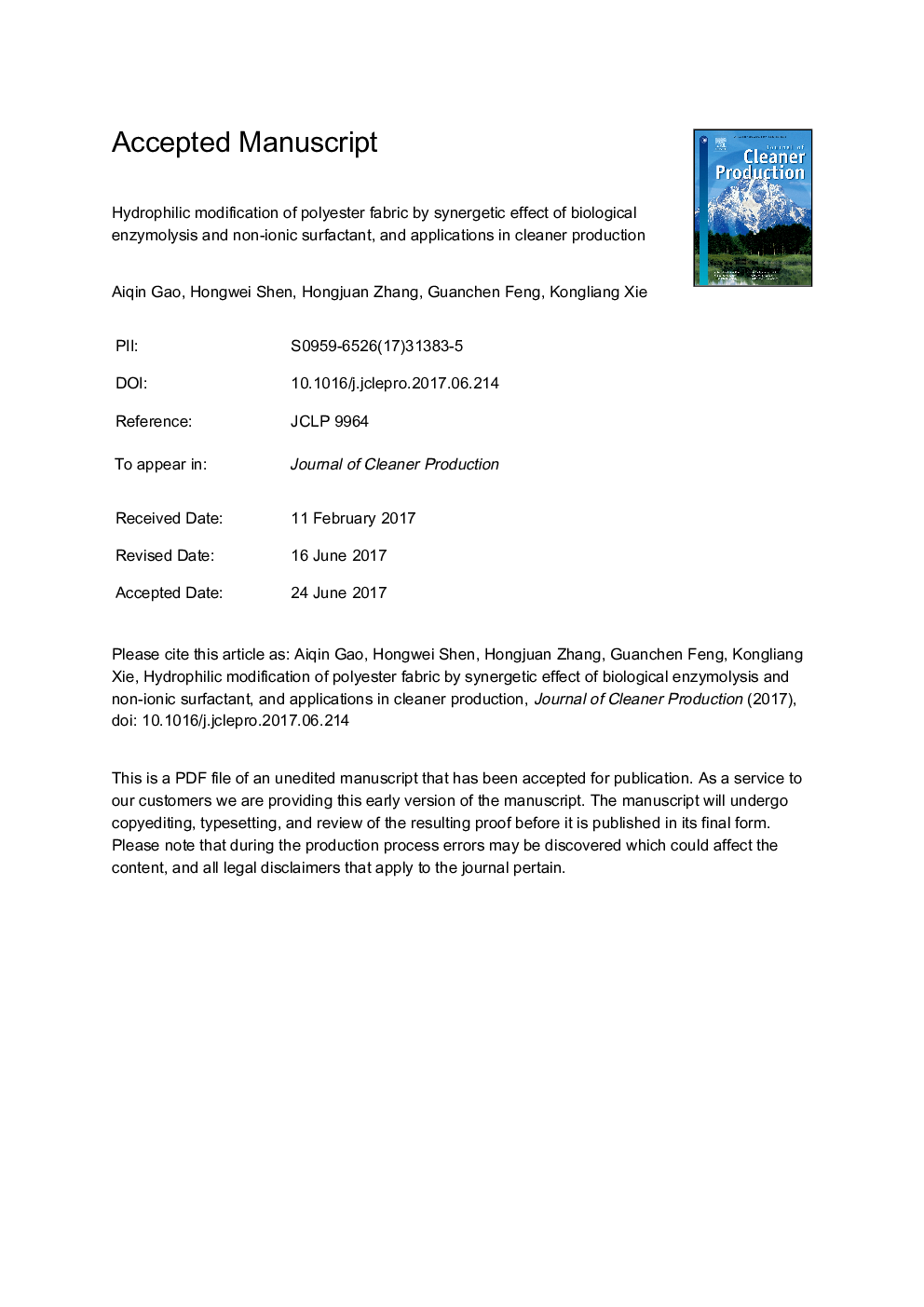| Article ID | Journal | Published Year | Pages | File Type |
|---|---|---|---|---|
| 5480444 | Journal of Cleaner Production | 2017 | 34 Pages |
Abstract
A significant trend in textile manufacturing is the improvement in cleaner production processes using new biotechnological techniques. The biological enzyme lipase was used to improve the surface hydrophilicity of polyester fabric. The activity of a lipase (triacylglycerol hydrolase, EC 3.1.1.3) from Pichia pastoris and the effects of various parameters were investigated. The surface morphology of the modified polyester fiber was examined using reflectance spectroscopy and scanning electron microscopy. The synergetic effects of lipase combined with each of the five surfactants, namely JFC, AEO-9, HMA-474B, Tween-80, and sodium dodecyl sulfate (SDS), were investigated. The surfactants AEO-9, HMA-474B, and SDS significantly inhibited the lipase activity. Tween-80 decreased the lipase activity slightly. A combination of the non-ionic surfactant JFC and the lipase gave excellent synergy and significantly improved the hydrolysis of polyester fabric. This synergetic technique using a lipase combined with JFC was successfully used in cleaner production in a pilot plant to improve the hydrophilicity of polyester fabric. The moisture regains and the antistatic properties of the modified fabric were clearly improved.
Related Topics
Physical Sciences and Engineering
Energy
Renewable Energy, Sustainability and the Environment
Authors
Aiqin Gao, Hongwei Shen, Hongjuan Zhang, Guanchen Feng, Kongliang Xie,
